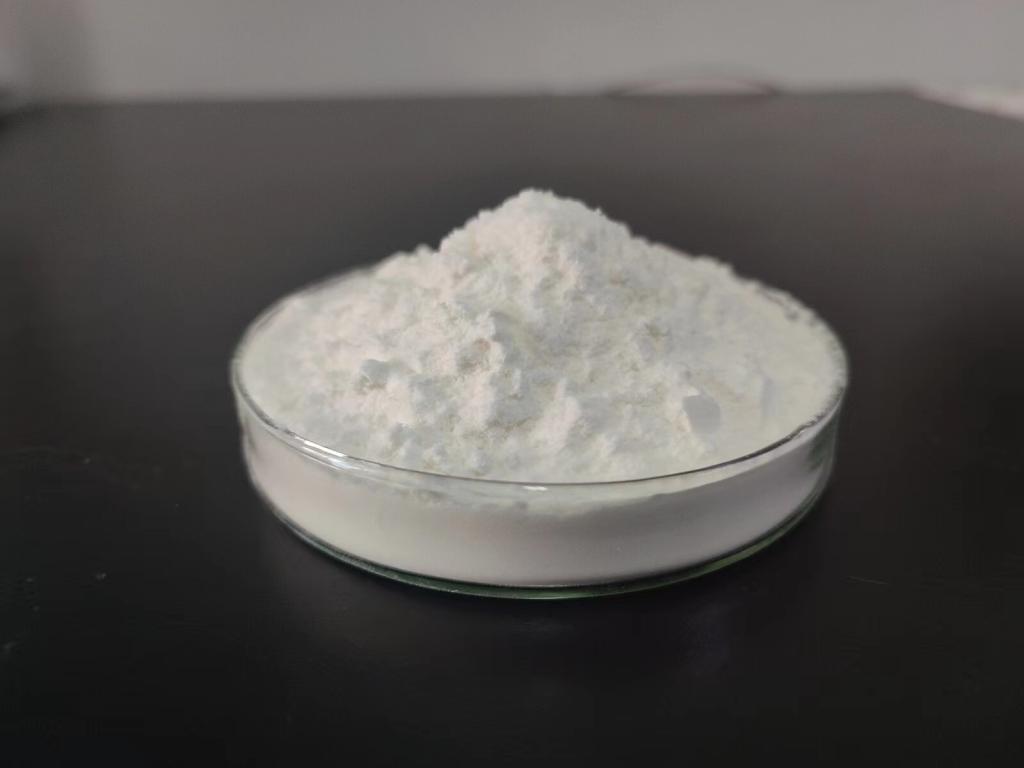Tel:0086 18231198596

News
Current Position:
Home >
News
>ε-Polylysine Hydrochloride: A Non-Toxic Alternative to Traditional Preservatives.
ε-Polylysine Hydrochloride: A Non-Toxic Alternative to Traditional Preservatives.
TIME:2024-06-06
Understanding ε-Polylysine Hydrochloride
ε-Polylysine hydrochloride is a polymer composed of lysine residues linked by peptide bonds through their ε-amino groups. Produced by certain strains of Streptomyces albulus, ε-PL is recognized for its broad-spectrum antimicrobial activity. It is approved for use as a food preservative in several countries, including Japan, the United States, and the European Union, due to its efficacy and safety profile.
Mechanisms of Antimicrobial Action
The antimicrobial properties of ε-PL are attributed to several mechanisms:
Disruption of Cell Membranes:
ε-PL interacts with the negatively charged components of microbial cell membranes, leading to membrane disruption, increased permeability, and eventual cell lysis. This mechanism is effective against a wide range of Gram-positive and Gram-negative bacteria.
Inhibition of Enzyme Activity:
ε-PL can interfere with essential microbial enzymes, disrupting metabolic processes and inhibiting cell growth and replication.
Disruption of Biofilms:
ε-PL has the ability to penetrate and disrupt biofilms, which are protective layers formed by microbial communities. This property is particularly valuable in food preservation, as biofilms can harbor pathogenic bacteria and contribute to food spoilage.
Applications in Food Preservation
ε-PL has been successfully utilized in various food products to enhance shelf life and ensure safety. Key applications include:
Dairy Products:
ε-PL is effective in preventing spoilage and extending the shelf life of dairy products such as cheese, yogurt, and milk. Its ability to inhibit the growth of Listeria monocytogenes and other spoilage bacteria makes it a valuable additive in the dairy industry.
Bakery Products:
The incorporation of ε-PL in bakery products can prevent mold growth and extend shelf life without affecting the taste or texture of the products. This is particularly beneficial for bread, cakes, and pastries.
Meat and Seafood:
ε-PL is used to control bacterial contamination in meat and seafood products, reducing the risk of foodborne illnesses caused by pathogens such as Salmonella and Escherichia coli. It also helps in maintaining the freshness and quality of these products during storage and transportation.
Beverages:
The antimicrobial properties of ε-PL are harnessed in beverages, including fruit juices and alcoholic drinks, to prevent microbial spoilage and extend shelf life.
Ready-to-Eat Foods:
Ready-to-eat foods, which are prone to microbial contamination, benefit from the addition of ε-PL. It ensures the safety and quality of these products, making them safer for consumer consumption.
Advantages of ε-Polylysine Hydrochloride
ε-PL offers several advantages over traditional chemical preservatives, making it an attractive option for the food industry:
Non-Toxicity:
ε-PL is derived from natural sources and has been extensively studied for its safety. It is non-toxic to humans and animals, making it a safe alternative to synthetic chemical preservatives that may have harmful side effects.
Broad-Spectrum Antimicrobial Activity:
ε-PL is effective against a wide range of bacteria, fungi, and yeasts, providing comprehensive protection against microbial spoilage and contamination.
Stability:
ε-PL remains stable under various environmental conditions, including different pH levels and temperatures, ensuring its effectiveness throughout the food processing and storage stages.
Biodegradability:
As a naturally occurring peptide, ε-PL is biodegradable and does not accumulate in the environment, reducing the ecological footprint associated with food preservation.
No Impact on Sensory Properties:
ε-PL does not alter the taste, smell, or texture of food products, preserving their sensory qualities while ensuring safety and extending shelf life.
Regulatory Status and Approval
The regulatory approval of ε-PL as a food preservative in several regions highlights its safety and efficacy. In Japan, ε-PL has been used as a food preservative for over two decades. In the United States, the Food and Drug Administration (FDA) has granted ε-PL Generally Recognized As Safe (GRAS) status, affirming its safety for use in various food products. The European Food Safety Authority (EFSA) has also evaluated and approved ε-PL for use in food preservation.
Implications for Food Safety and Consumer Health
The adoption of ε-PL in food preservation has significant implications for food safety and consumer health:
Reduction of Foodborne Illnesses:
By effectively controlling pathogenic bacteria, ε-PL can help reduce the incidence of foodborne illnesses, protecting consumers from potentially life-threatening infections.
Enhanced Food Security:
The ability of ε-PL to extend the shelf life of food products contributes to food security by reducing food waste and ensuring a more stable supply of safe and nutritious food.
Meeting Consumer Demand:
Modern consumers are increasingly seeking natural and clean-label food products. ε-PL meets this demand by providing a natural, non-toxic preservative option that aligns with consumer preferences for healthier and safer food choices.
Future Directions and Research
While ε-PL has demonstrated considerable potential as a food preservative, ongoing research and development are essential to fully harness its benefits and expand its applications:
Innovative Formulations:
Developing novel formulations and delivery systems for ε-PL can enhance its efficacy and stability in various food matrices, ensuring optimal performance in diverse food products.
Synergistic Combinations:
Exploring synergistic combinations of ε-PL with other natural preservatives or antimicrobial agents can enhance its antimicrobial spectrum and efficacy, providing comprehensive protection against a broader range of pathogens.
Application in Non-Food Industries:
Beyond food preservation, ε-PL has potential applications in other industries, such as cosmetics, pharmaceuticals, and agriculture. Research into these applications can uncover new uses and benefits of ε-PL.
Environmental Impact Studies:
Conducting comprehensive environmental impact studies can provide insights into the biodegradation pathways and ecological effects of ε-PL, ensuring its sustainable use and minimizing any potential environmental impact.
Conclusion
ε-Polylysine hydrochloride represents a promising, non-toxic alternative to traditional chemical preservatives. Its broad-spectrum antimicrobial activity, stability, biodegradability, and safety make it an ideal choice for enhancing food safety and extending shelf life. As consumer demand for natural and safe food additives continues to grow, ε-PL offers a solution that aligns with these preferences while ensuring the integrity and quality of food products. Ongoing research and innovation will further unlock the potential of ε-PL, expanding its applications and reinforcing its role in promoting sustainable and safe food preservation practices.

 CONTACT
CONTACT




